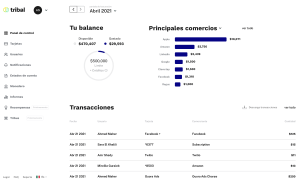News: Affect raises a seed round to grow its stimulant abuse recovery service
There are any number of seed rounds that cross our desks every day, a never-ending march of enterprise software, consumer apps, games, hardware, biotech, and sometimes even a space startup. But amid the regular flow of funding news, it’s still rare to come across a company raising money to take on addiction with software. So
There are any number of seed rounds that cross our desks every day, a never-ending march of enterprise software, consumer apps, games, hardware, biotech, and sometimes even a space startup. But amid the regular flow of funding news, it’s still rare to come across a company raising money to take on addiction with software. So when Affect’s $1 million seed round from AlleyCorp came to my attention, I wanted to learn a bit more.
As someone who went to rehab for alcohol use disorder in what appeared to be a partially renovated middle school where the highest-tech thing that was in our group rooms were chairs, the idea of using software to help addicts reduce use and get their life back intrigued me.
Focused on stimulant abuse in particular, the startup wants to help people addicted to methamphetamine, for example, fully cease their use of the drug. Affect CEO Kristin Muhlner talked me through the company’s efforts during an interview. In short, the Affect app combines contingency management (rewards for positive behaviors) and cognitive behavioral therapy, or CBT (a form of therapy with known impact on addiction). Regarding the latter, Muhlner told TechCrunch during an interview that well-known recovery programs like AA or SMART Recovery also use forms of CBT in their approaches to helping addicts
In app form, those two concepts break down into things like cash rewards for multi-day abstinence or attending a group session. And on the therapy front, Affect offers group therapy, individual therapy, addiction counseling, and drug testing.
Like many companies today, Affect intends to learn from more data; it expects, per a deck that TechCrunch was able to review, machine learning to help the company hone its model and service over time. Let’s hope.
Critically, Affect is not opposed to medically assisted recovery, which matters. There is, in some recovery-focused theologies, a belief that any sort of medical assistance is akin to merely replacing one addiction, or substance, with another. This harmful view is contradicted by science. So, to see Affect cite adjuvant medication in its own pitch materials was heartening.
Stimulant abuse is rampant in America, and meth addiction is among the most deadly drugs in the country. Meth is no fucking joke. The only good amount of meth usage is precisely and exactly zero meth usage. So what Affect is building could actually change the world for stimulant addicts if it works.
I honestly hope Affect company winds up raising a bit more to more fully test out its thesis regarding addiction recovery. With insurance companies picking up the tab for Affect’s software, it has a chance to reach lots of folks in need. So many, in fact, that when I asked its CEO how it was handling go to market work, she said that her company had been warned that her user group was hard to reach. However, after putting up a digital ad, her company had to take it down seven minutes later. How’s that for product-market fit.
Let’s hope we see more startups working on this problem. Addiction is not going away and older methods are not the only way forward for addicts.








